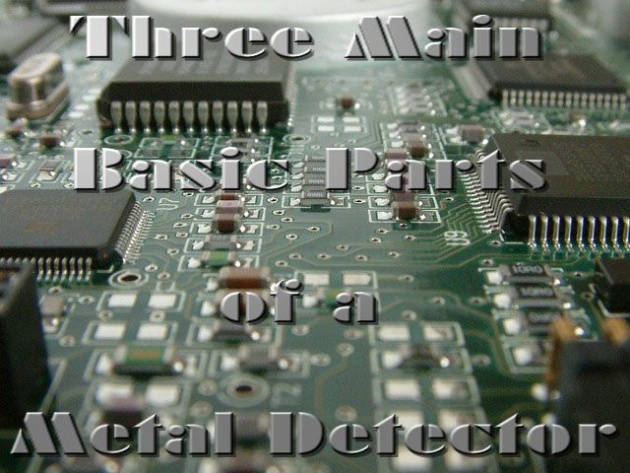All metal detectors are composed of three main basic parts. If one of these parts are missing then the equipment will not function or work. So what are these three main basic parts of a metal detector?

1. The Battery
Metal detectors are made out of electronic components which requires power or electricity before it is going to work. So without batteries, your equipment is rendered useless and good as dead.
Some batteries used by commercial metal detectors are special and unique. This means that when the battery of your equipment got damaged and needs a replacement, you can only purchase a replacement battery from the manufacturer. If you don't want to go through the hassle of chasing your manufacturer to buy a replacement battery then you should consider buying a metal detector that utilizes standard sizes and voltages.
Batteries are also generally categorized into two types, the rechargeable and the non-rechargeable. Common question is that, "Which one is better to use for metal detectors?".
Rechargeable batteries are indeed pretty expensive but the benefit is that you can repeatedly use it several times by simply charging it. While non-rechargeable batteries are cheaper but cannot be re-charged. Based on experience, I can use my NiCad rechargeable batteries for around 500 times before it needs new replacements. That is comparable to buying a total of 500 non-rechargeable batteries. So in short, you can save a lot of money by using rechargeable batteries.
You may also want to know that non-rechargeable batteries have contents that are not environmental friendly. They actually contain mercury, lead and cadmium.
2. Search Coil
The "Search Coil" is the basic part of a metal detector that scans the surface of the ground for the metallic target item. They usually take the shape of a circle, oblong, square and rectangle. But most commonly, the search coil takes the shape of a circle.
So how does a search coil work?
The search coil is actually the "transmitter" and "receiver". It works by transmitting a powerful electromagnetic field down into the ground. Assuming that the transmitted electromagnetic field hit a certain metallic object, this object will become energized. Once completely energized, it will deflect the excess signal in the opposite direction which goes up onto the surface of the ground.
Now, the reflected electromagnetic signal will be picked up by the search coil which will be processed into an audible or visual alert indicating that an object has been detected.
3. Control Box
The "Control Box" of a metal detector is where all the settings are calibrated. Some even contains screen that gives visual display of the detected item. It is like the Central Processing Unit of the equipment because it is the one that processes the received signal converting it into an analog output.
Overall, those are the three main basic parts of a metal detector.



